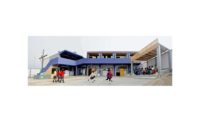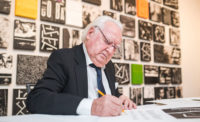Innovative Architecture School Closes in Costa Rica
Nearly 16 years after founding Costa Rica’s trailblazing architecture school, Universidad del Diseño (UniDis), Alvaro Rojas, AIA, has decided to close it. Financial considerations and competition from a growing number of for-profit schools drove the decision, says Rojas. “For the past six or seven years, the majority of our teaching staff has worked pro-bono,” explains Rojas, and he has subsidized the school’s operations out of his own financial resources.


Photos © Clifford A. Pearson
Although it graduated only 71 students since it opened in 1993, UniDis changed the profile of architecture in Costa Rica and served as an important platform for the teaching of green design. In 1993, only two other schools offered degree programs in architecture, the public Universidad de Costa Rica (UCA) and the private Universidad Autonoma de Centroamerica (UACA). Frustrated with the quality of architectural education in the country, Rojas, a Costa Rica native who had trained and then taught at City College in New York, opened UniDis to provide more in-depth training in smaller classes with greater interaction between students and professors. “UniDis was an experimental school with a simple objective,” states Rojas, “prepare top-notch architects for Costa Rica and the world.” To do this, though, the school required students to go through a longer and more expensive program than its competitors.
Architectural culture has shallow roots in Costa Rica, where the first degree program began only in 1971. Before then, Costa Ricans went abroad to study architecture, mostly in Mexico. UniDis, though, shook up the status quo, and a dozen new private architecture schools opened in a country with only 4.2 million people. Offering less intense and cheaper programs and spending money on marketing themselves, these schools made it increasingly difficult for UniDis to survive, explains Rojas. Most of the new private schools charge around $2,000 per year in tuition, compared to $3,500 for UniDis, according to Rojas.
UniDis distinguished itself by training students to think of buildings within the context of the city, to understand the importance of environmental sustainability, and to engage with architectural communities beyond the borders of Costa Rica. In 1999, Rojas organized a bi-annual symposium called Mundaneum, which brought international practitioners and academics such as Michael Rotondi, Charles Jencks, Carlos Jimenez, James Wines, Craig Hodgetts, Enrique Norten, and Michael Sorkin to speak at the school. UniDis also placed its students in internships at foreign firms such as the Renzo Piano Building Workshop, RoTo Architects, and TEN Arquitectos.
“The school took architecture to another level,” says Andrea Gonzalez, who graduated this year and interned with Piano. “It opened our minds and gave us great exposure to the world. It made us think in terms of society and community and offered us the opportunity to meet great architects.”






